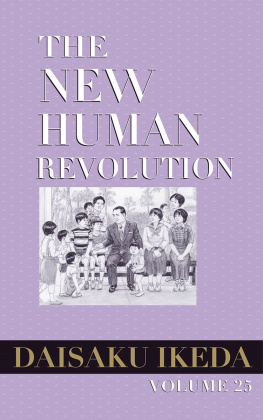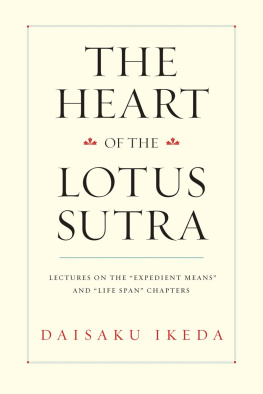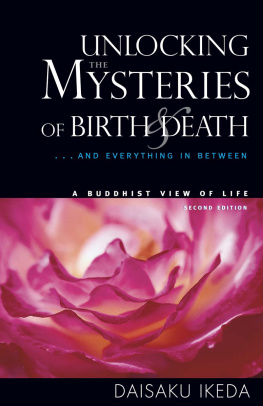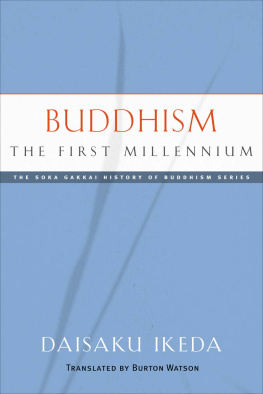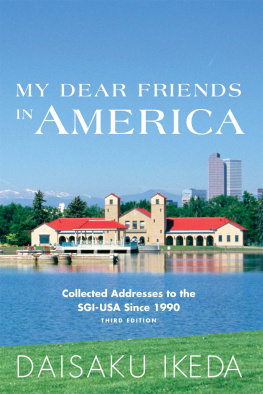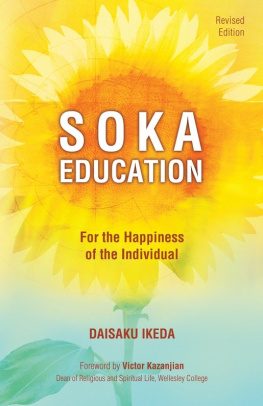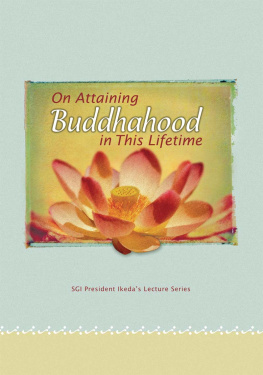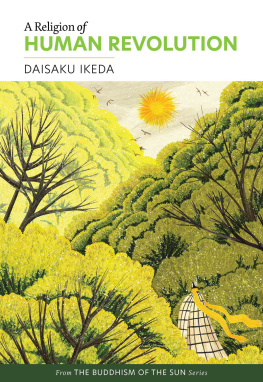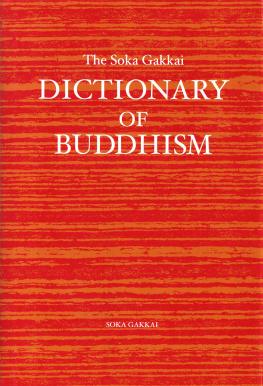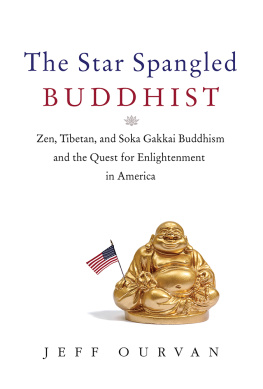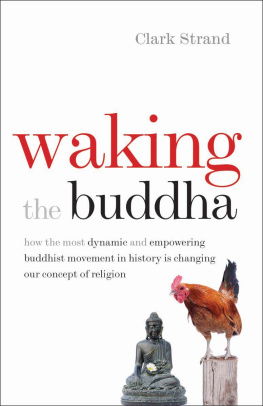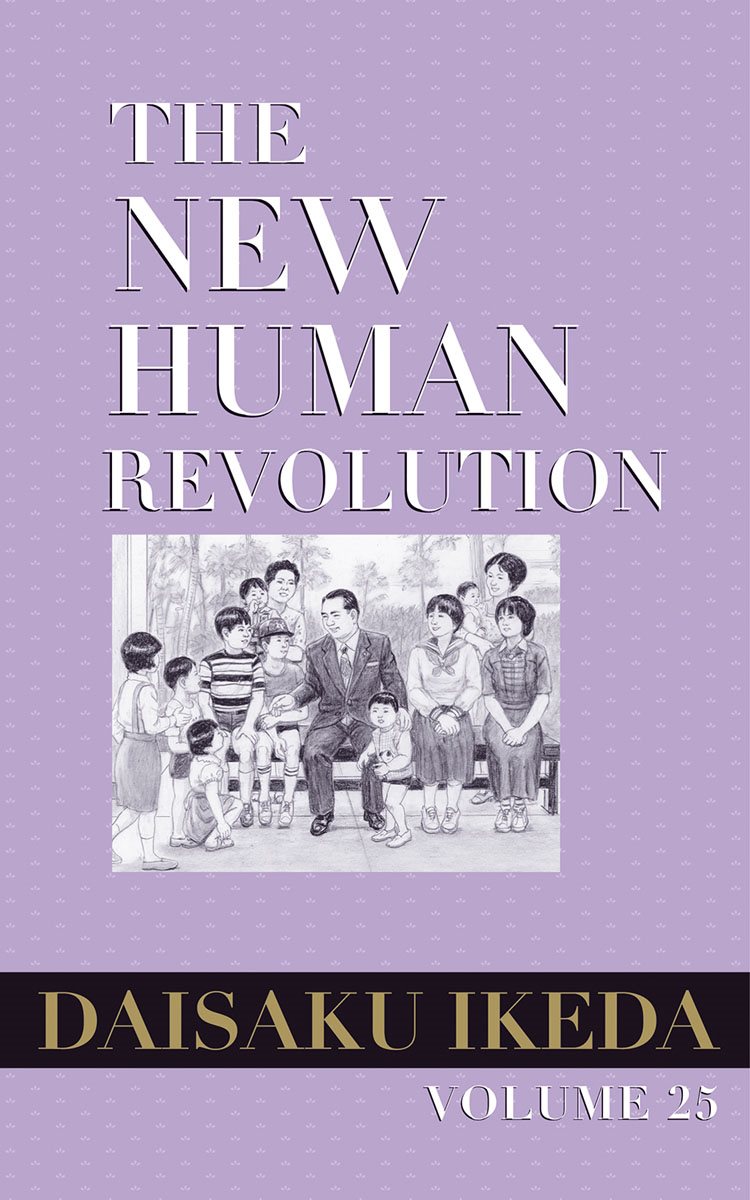

Published by World Tribune Press
606 Wilshire Boulevard
Santa Monica, California 90401
2014 by Soka Gakkai
All rights reserved
Printed in the United States of America
Complete Set ISBN : 978-0-915678-32-7
Volume 25 ISBN : 978-0-915678-57-0
Library of Congress Control Number: 2013919404
Interior and cover designed by Gopa & Ted2, Inc.
25 24 23 22 21 4 5 6 7 8
Contents
Editors Note
The citations most commonly used in this book have been abbreviated as follows:
- GZ , page number(s) refers to the Gosho zenshu, the Japanese-language compilation of letters, treatises, essays, and oral teachings of Nichiren Daishonin.
- LSOC , page number(s) refers to The Lotus Sutra and Its Opening and Closing Sutras, translated by Burton Watson (Tokyo: Soka Gakkai, 2009).
- OTT , page number(s) refers to The Record of the Orally Transmitted Teachings, translated by Burton Watson (Tokyo: Soka Gakkai, 2004).
- WND , page number(s) refers to The Writings of Nichiren Daishonin, vol. 1 ( WND -1) (Tokyo: Soka Gakkai, 1999) and vol. 2 ( WND -2) (Tokyo: Soka Gakkai, 2006).

Light of Happiness
Spring is here!
The spring of rebirth is here!
The new sprouts of hope
having survived the harsh winter
break through the frozen earth,
vigorously bursting forth, heralding the arrival of spring!
The plum blossoms fill the garden with fragrance and tranquillity,
the splendid cherry blossoms dance with the joy of happiness, and
a triumphal song of the people heralds the victorious arrival of spring!
No matter how many times we are trampled on,
we wont be defeated.
No matter how harsh
the tribulations that beset us,
we hold our heads high and press onward.
Forward, forward, always forward!
Neither angry breakers nor raging storms can stop us!
We have the invincible and indestructible
Michinokuspirit.
In our hearts,
the fighting spirit of the Bodhisattvas of the Earth burns
and the great compassionate life of the Buddha
sparkles with a golden light.
We have an eternal mission
that we must fulfill in this existence.
We have the great vow of Soka mentors and disciples
to create happiness for all and to build a flourishing community.
My friends!
Transform sadness into courage.
Transform karma into mission.
Break through the darkness
and make the morning sun rise in your hearts.
Come, dancing forth like a reborn sun
heralding the arrival of spring to Michinoku!
On March 11, 1977, Shinichi Yamamoto traveled to Fukushima to visit the new Fukushima Culture Center located in Kuwano, Koriyama City.
D EPARTING FROM Tokyos Ueno Station at two in the afternoon on the Tohoku Main Line limited express train Hibari, Shinichi passed through the flat landscape of the Kanto Plain. Watching the scenery outside the train window, he could see the dried grass blowing in the wind and the exposed gray-brown earth of the bare fields. The land was still in the grip of winter.
I wonder if there will be a good harvest this year, thought Shinichi, chanting silently as he looked at the dry, not yet irrigated rice fields.
The previous year, 1976, Japan had its fifth-worst rice harvest since the end of World War II, due to an unseasonably cold summer and a series of typhoons. The region from Hokkaido down through Tohoku had been especially cold from August to September, and there was a sharp drop in crop yields. Many farming families were facing difficulties.
According to the statistics compiled by the Ministry of Agriculture and Forestry in November, the total loss was 409.3 billion yen, broken down as follows: Hokkaido, 86.1 billion yen; Iwate Prefecture, 36.1 billion yen; Miyagi Prefecture, 32.4 billion yen; Niigata Prefecture, 31.3 billion yen; Aomori Prefecture, 30.9 billion yen; and Fukushima Prefecture, 28.5 billion yen.
In addition, from December through February, Japan experienced a severe cold spell. Even in Tokyo, the average high in January was only 45.5 degrees Fahrenheit, the lowest since the war. The amount of snow rivaled that of the heavy snowfall of January 1963. And on February 8, Aomori City recorded the heaviest snowfall since the war, 6.4 feet. In Moshiri, Horokanai-cho, Hokkaido, a new postwar record low temperature was set at -41.4 degrees Fahrenheit.
The heavy snows caused the cancellation of more than twenty-nine thousand trains on Japanese National Railways lines.
The cold spell also affected agriculture, delaying the harvest of vegetable crops and causing a sudden spike in prices. In February, cabbage prices shot up to six times that of the previous autumn. Tohoku in particular was severely affected by the unseasonably cold weather.
Shinichi thought: Tohoku has had to deal with the cold weather, drought, and the effects of the 1960 Chilean Earthquake and Tsunami. Thats why I want Tohoku to transform its karma and flourish, and be happier than any other place. Im going to make my visit to Tohoku to proclaim this new dawn.
H E ARRIVED at the Fukushima Culture Center a little after half past four in the afternoon.
The center was located in the Aizubandai area west of Koriyama Station, with a view of Mount Adatara to the north and the Abukuma highland to the east. The three-story reinforced-concrete building with brown tile walls was situated on a spacious lot.
On the first floor were an office, an editing room, and a conference room. The second floor consisted of a 3,469-square-foot auditorium and a Japanese-style room, and on the third floor was a special exhibition room.
When Shinichi stepped out of the car in front of the entrance, several leaders were there waiting to greet him.
Looking at Norio Shiba, the Fukushima Prefecture leader, and Kakuji Tone, the Tohoku region leader, Shinichi began to speak to them energetically: Im here! Lets get started and build a new Fukushima and a new Tohoku! From today, we are departing on a fresh chapter.
Yes! replied the two in unison.
Shinichi began to walk through the centers garden. Its a fine center. Im sure everyone is very happy with it. I hope our members will be able to rejuvenate their faith here and then go out to initiate a groundswell of kosenrufu filled with self-confidence and enthusiasm.
Norio Shiba was from Miyagi Prefecture. He had been a vice national youth division leader before being appointed as the Fukushima Prefecture leader in December of the previous year. He was thirty-five years old and exhibited the rich qualities of initiative and innovation.
Shinichi wanted to talk to him about the key for advancing kosen-rufu. Mr. Shiba, to construct a new era for our Soka movement in Fukushima, it wont be enough to focus just on short-term, ad hoc plans and new guidelines for activities. A firm foundation is created through the transformation of all the members attitudes, to enable them to refresh their lives. It is vital that you foster true champions who have pride in where they come from and are dedicated to kosen-rufu.
Next page
